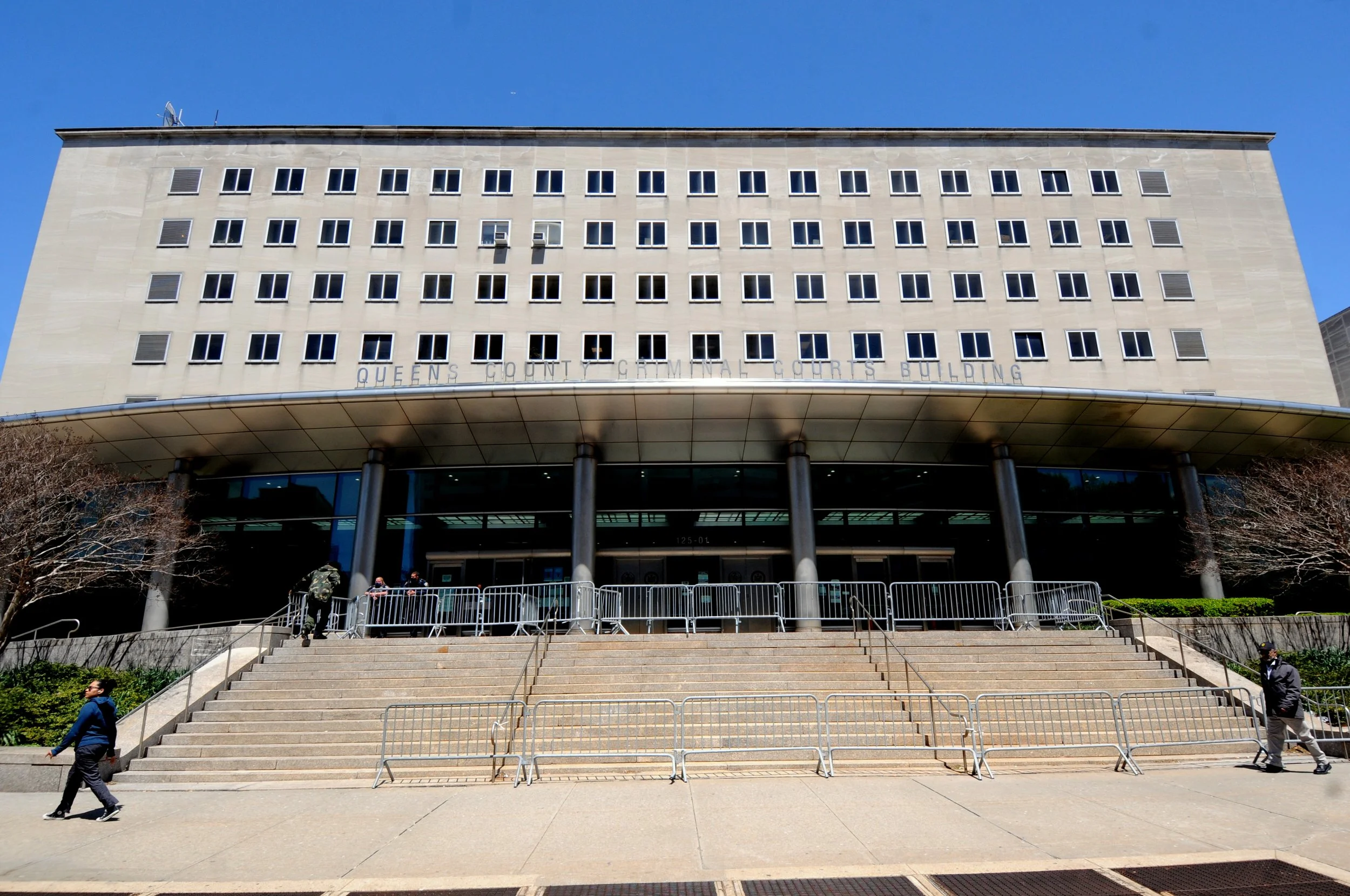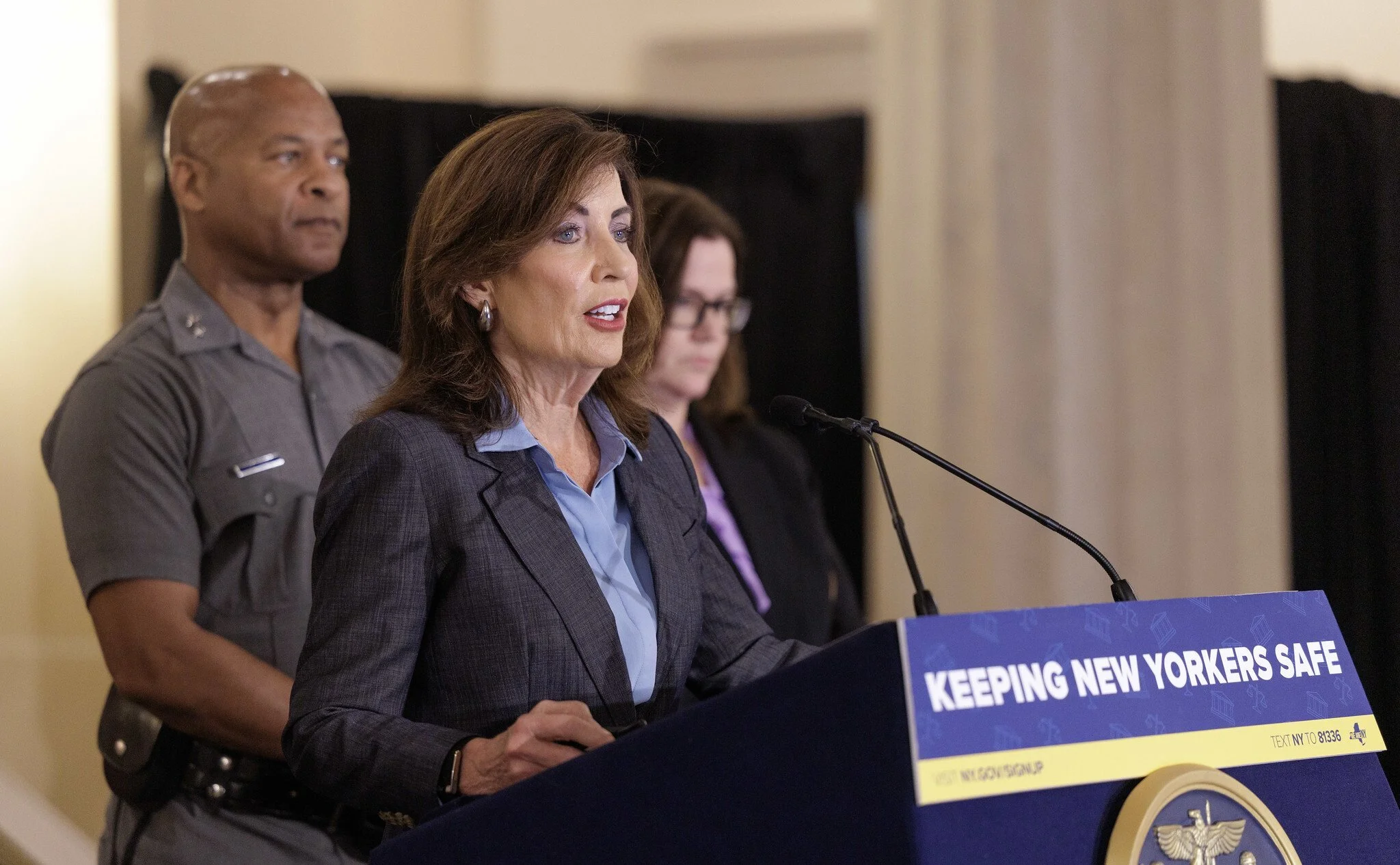Bail reforms have led to less recidivism, report finds
/A new report shows that recidivism rates are down for nearly all crime categories five years after cash bail was prohibited for misdemeanors and non-violent offenses. Eagle file photo by Walter Karling
By Noah Powelson
Recidivism and re-arrest frequency for people charged with nearly all crimes have significantly declined in the five years since cash bail was prohibited for misdemeanors and nonviolent felonies, a new report shows.
The data was detailed in a report from John Jay College’s Data Collaborative for Justice, which examined the impact the 2019 bail reform laws on the state’s recidivism rates, marking the first time recidivism rates have been seriously studied since the passage of the contentious reforms.
By comparing recidivism rates of people who had bail set against them before in 2019 with those released in 2020 and beyond, the researchers found recidivism rates have decreased across the board since bail reform was enacted, with one exception – people with a recent criminal history at the time of their arrest showed slightly higher rates of re-arrest after being released.
The Data Collaborative for Justice report, which analyzes not just the rate at which those released without bail are re-arrested, but how often, is the most comprehensive report on recidivism since the bail reform laws went into effect in June of 2020.
Since the reform’s passage, lawmakers have worked to scale them back year after year.
Tuesday’s report comes several months after Governor Kathy Hochul said she was “willing” to explore rolling back the state’s Raise the Age laws, a similar set of reforms that went into effect the same year the bail reforms were passed.
While the new report does not include data on the effects of Raise the Age legislation, it does appear to combat the many times lawmakers claimed that the implementation of the state’s bail reforms were leading to worsened recidivism rates.
Over the 50-month period following the 2020 bail reform, 57 percent of people released without bail were re-arrested for a different crime. The rate is lower compared to the re-arrest rate in 2019, when those who had bail set against them or were remanded were re-arrested 66 percent of the time.
People charged with felonies also had lower recidivism rates – 33 percent post-reform versus 40 percent before bail reform was put into place.
Accused violent felons matched this trend, with 20 percent being re-arrested for another crime after the reforms passed compared to 25 percent before bail reform.
Governor Kathy Hochul has indicated she is open to further modify the state’s bail reform laws.Photo by Mike Groll/Office of Governor Kathy Hochul
The biggest reduction appeared among those with no recent criminal history at the time of their arrest. People released without bail who had no prior arrests were re-arrested 34 percent of the time, compared to 45 percent pre-bail reform.
Re-arrest frequency, or how often someone was arrested during pre-trial release, slightly decreased but remained more or less the same compared to the pre-bail reform years.
The only exception to the trend is people who had recent criminal history when they were arrested, in which re-arrest frequency slightly increased from an average of 2.85 arrests per person to 3.2. People with violent felony criminal history displayed the highest increase in re-arrest frequency.
“Among those with any recent criminal history, re-arrest rates were unaffected, though the frequency of overall and felony re-arrests increased,” the report reads. “For the smaller fraction of people (under 15 percent in all regions) with recent prior violent felony arrests, release without bail was consistently associated with elevated re-arrest rates and more re-arrest incidents.”
The authors of the report at the DCJ argued that the data backs what proponents of bail form have long claimed – eliminating cash bail for non-violent crimes does not encourage recidivism and instead has a positive effect on public safety.
“Our research tells a clear story: bail reform achieved what it set out to do — reduce the use of money bail and pretrial detention without undermining public safety,” René Ropac, Senior Research Associate at the DCJ said in a statement. “At the same time, the notable increases in reoffending among people with recent criminal histories — especially those previously arrested for violent offenses — is an issue that should not be overlooked.”
A spokesperson for the Office of Court Administration, Al Baker, said the Unified Court System will review the report.
Bail reform has been a contentious issue since the legislation was enacted in 2019, and has seen some level of amendment nearly each year since.
The law, as it was first instituted in 2020, ended the use of money bail for most misdemeanors and nonviolent felonies.
Shortly after it was introduced and nearly every year since, lawmakers have instituted modifications or rollbacked some provisions of the law. Judges received expanded authority to set bail for repeat offenders in certain instances, gun specific offenses were made eligible for bail and lawmakers removed requirements for judges to set the “least restrictive” pretrial conditions.
A spokesman for the Governor’s office said the report showcases how the changes to the bail and discovery reforms over the years, as well as additional law enforcement funding, has produced results.
“By all metrics, these reforms are working: rearrests are down and New York City now has one of the lowest violent crime rates in six decades,” the spokesperson said. “We will continue working with law enforcement and local officials to improve the criminal justice system, combat violence, and strengthen public safety all across New York."
Mayor Eric Adams said the recent report vindicates his criticism of bail reform that it creates repeat offenders, and calls for further changes to the law.
“This report confirms the mayor’s concerns with its finding that some of the most dangerous people exiting our criminal justice system — those with recent violent felony arrests — have been more likely to get re-arrested than they were prior to the bail reform law,” A city hall spokesperson told the Eagle in a statement.
At an event in the Town of Tonawanda police headquarters in upstate New York last September, the governor said she was open to further bail reform changes in the upcoming legislative session.
"I'm always willing to look at laws," Hochul said. "I'm the governor who had to go in and undo measures which were well-intended measures but which did not foresee down the road the implications and the collateral damage to the communities."
What’s more, Hochul has indicated this past year she was open to modifying the Raise the Age reform, a 2017 law that raised the age of criminal responsibility from 16 to 18. The law diverts those under the age of 18 who commit a crime to Family Court instead, with the goal being keeping youth out of jails and exposed to criminal adults.
Critics of Raise the Age, including New York City Mayor Eric Adams and NYPD Commissioner Jessica Tisch, claim the law encourages teen gun violence.
With the next legislative session and budget negotiations fast approaching, the DCJ report authors encouraged lawmakers to keep the data in mind when considering the impact realities of the law.
“Our study found that pretrial release is aligned with public safety, overall, and produced especially notable recidivism reductions for people with no recent criminal history,” Michael Rempel, executive director of the DCJ, said. “We hope policymakers absorb these positive findings, while no less grappling thoughtfully with elevated recidivism seen among the fraction of people with serious criminal histories.”





